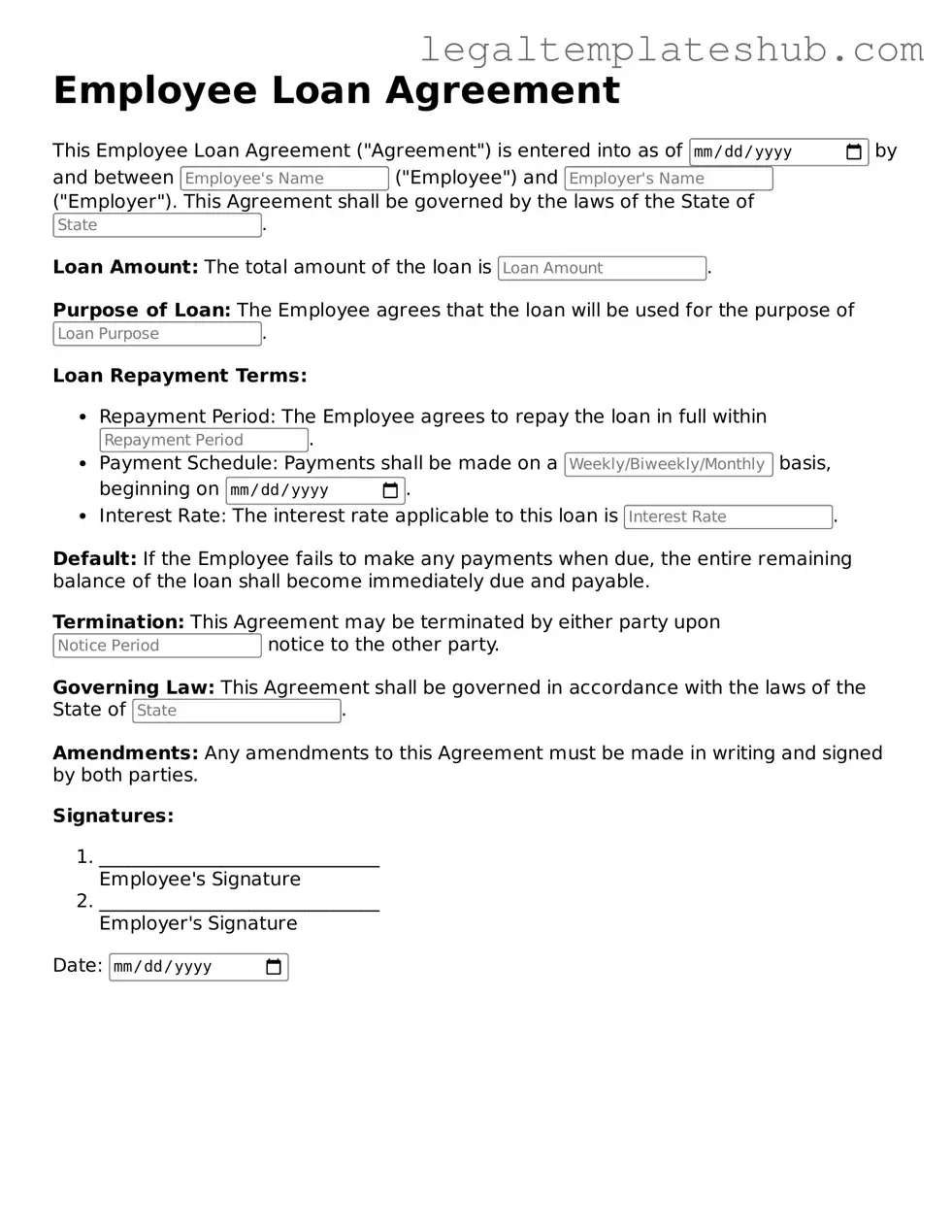Printable Employee Loan Agreement Template
An Employee Loan Agreement is a formal document outlining the terms under which an employer lends money to an employee. This agreement ensures clarity and protects the interests of both parties by detailing repayment terms, interest rates, and other essential conditions. To get started with the process, consider filling out the form by clicking the button below.
Access Editor
